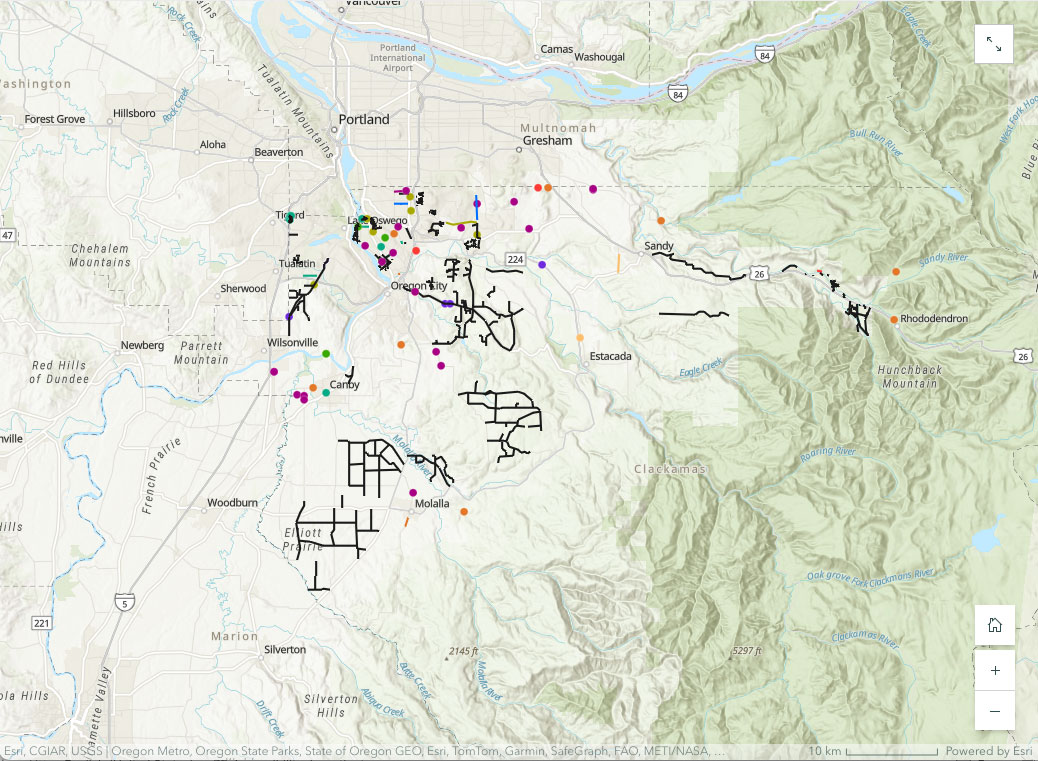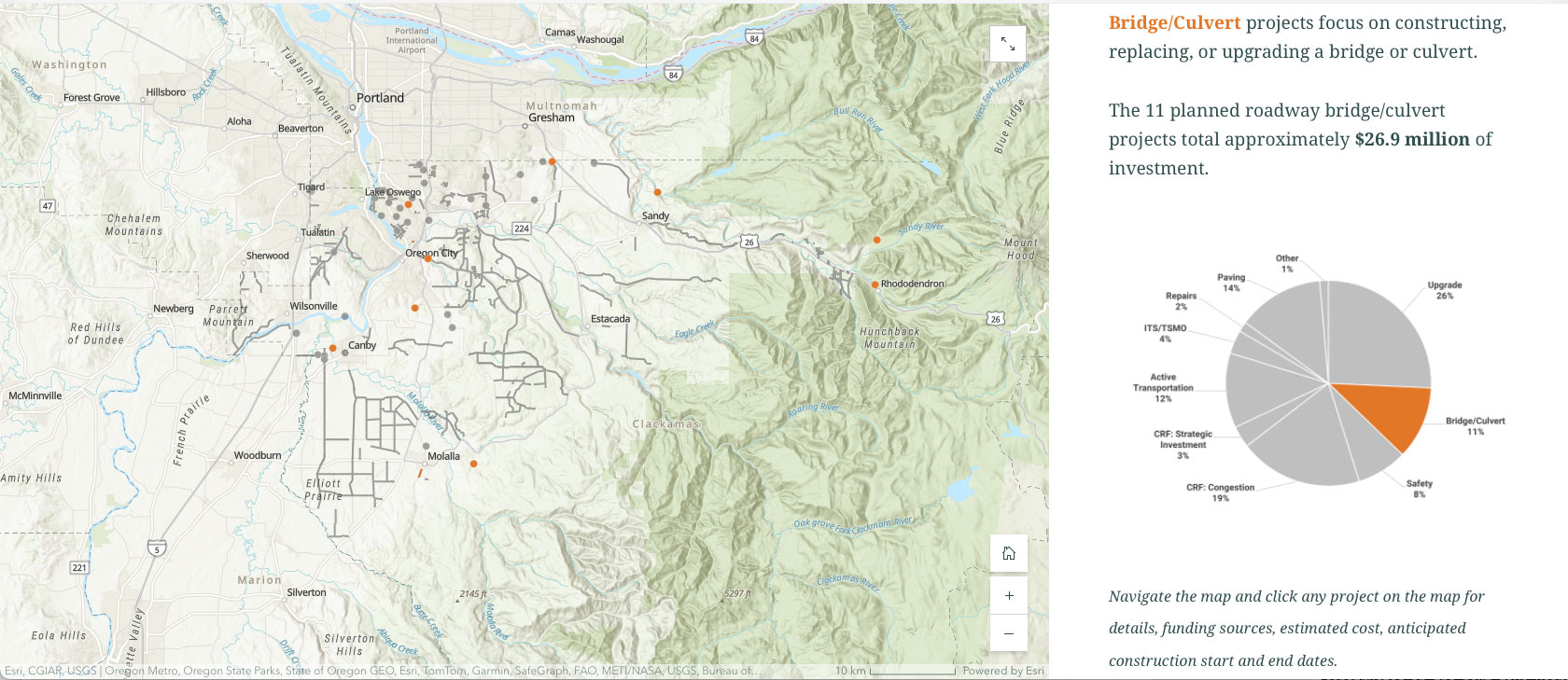Planning for the future of transportation in Clackamas County
Government processes can seem like a confusing maze to many people. Rules and regulations have been put into place for a variety of reasons to protect public dollars. This article is meant to provide a better understanding of how we decide which transportation projects to construct.
As every single county in the nation experiences, we have more needs than we will ever have resources. And like every household, we need to budget for the things we need the most, maintain the assets we do have, plan for many types of emergencies, and defer costs when needed to respond to changing conditions.
Clackamas County is responsible for maintaining the integrity and safety of over 1,400 miles of county roads, 186 bridges, and nearly 200 traffic signals. This transportation system represents a $1 billion investment that must be continually maintained and improved to accommodate increasing demands.
The lists
To best prioritize our use of the funds we do receive, we separate our transportation needs into different lists. The structure shown below is how the advisory group for the last transportation system plan update chose to prioritize the projects. The advisory group for our upcoming plan update may choose to organize the projects differently.
Every 10 years, we plan investments for the next 20 years. This includes more than 300 projects in unincorporated Clackamas County. Projects can range from adding a sidewalk, paving roads, upgrading traffic signals, adding turn lanes and even replacing bridges. From this system analysis a tiered list of projects is developed:
- Tier 1: 20-year capital projects: High priority projects with potential funding sources. A five-year list is created from this larger list of projects expected to be funded. As resources are acquired, staff implement the plan. More on the five-year list below.
- Tier 2: Preferred capital projects: Other priority projects needed to meet population, housing and employment projections without identified funding sources.
- Tier 3: Long-term capital project needs: Beneficial projects if funds were available.
The funding equation
We receive funding from a variety of sources. Over time, these funding streams have changed. Some of these resources are dedicated to specific types of projects.
- County road fund: Clackamas County receives funding from the State of Oregon based on our population. These resources are collected from state vehicle registration fees, gas taxes and commercial weight fees.
- Federal rural fund: A portion of timber sales goes to a dedicated fund for rural transportation projects called the Secure Rural Schools program. This fund has decreased significantly over the last two decades.
- Community Road Fund: In January 2020, a countywide vehicle registration fee dedicated solely to improving roadways in Clackamas County took effect. In the last four years, over $9 million of revenue has supported projects to pave roadways, improve road safety and reduce congestion. In the next three years, approximately $26 million will be spent on similar projects in unincorporated Clackamas County. Completing projects on this list would not be possible without this dedicated local funding source. For additional information about upcoming projects, visit www.clackamas.us/transportation/crf.
- Grant awards: We diligently watch for opportunities to obtain state, federal and other types of grant funds to support our projects. Successful applications allow us to build more projects in the 20-year capital project list. We know we have more projects than can ever be built with the funds we have, but we’re ready if funding opportunities become available.
Moving to implementation: the five-year project list
When we have secured funding for projects, they move to the five-year list. Every two years we update that list and present the plan to the Board of County Commissioners for approval.
The 86 projects in the five-year list are estimated to cost approximately $220 million, and about $16 million of that is funded through the Community Road Fund. These projects have been prioritized to improve safety and enhance capacity by upgrading roads, improving bridges and culverts, installing new signal systems and completing major repairs.
Explore the projects listed to be designed or constructed in the next five years.
Get involved in transportation planning
Planning for our transportation needs over the next 20 years is a big task, and your knowledge of the system is crucial! If you’d like to share your experience traveling in the county, check out these opportunities:
- Apply to join an advisory group in your area. We’ll have advisory groups for multiple geographic areas in the county to hear about people’s challenges.
- Participate in surveys to provide feedback on project goals, potential strategies and eventually our draft transportation system plan.
- Sign up for the email list and be the first to know when things are happening. We’ll announce when applications are open for the community advisory groups, when surveys are live, when in-person events are occurring and more.
Your feedback will help identify which projects should go on these lists. Sign up to receive email updates and notices for feedback opportunities at www.clackamas.us/transportation/tsp.
 Translate
Translate







